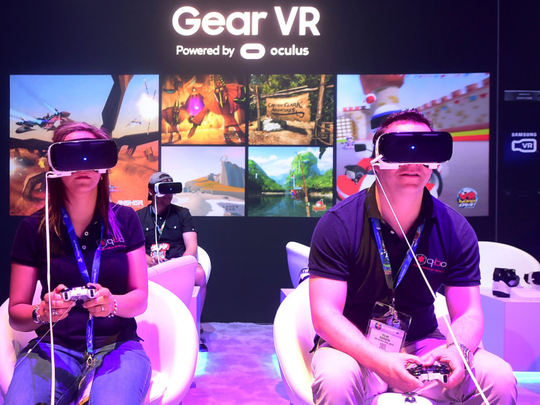
Dubai
While smartphone-reliant VR shipments such as Samsung Gear VR and Google Daydream dwarf today’s other VR device types, stand-alone devices will see a 405 per cent annual growth through 2021, compared to a 42 per cent growth rate for mobile VR.
ABI Research forecasts that VR device shipments will hit 110 million by 2021.
New device players, including Royole and Pico, already entered the global market, with many other Chinese manufacturers poised to expand.
“Mobile VR built a solid foundation for the overall market over the past few years, but stand-alone VR devices will eventually drive it,” said Eric Abbruzzese, senior analyst at ABI Research.
He said that low cost and high accessibility has, and will continue to, drive VR adoption with mobile devices and associated VR accessories. However, a trend toward stand-alone devices is surfacing, and will continue over the next five years until mobile and stand-alone VR devices see parity in terms of shipments.
Paul Lee, Partner and Global Head of Technology, Media and Telecommunications Research at Deloitte UK, said that one of the constraints on the growth of the high-end VR market is the cost. If high-end VR requires a $500+ headset as well as a $1,000 PC, this will place significant constraints on the growth of the market, as it limits the addressable base. There are perhaps 15 million PCs in the world that can work with high-end VR headsets.
“The more content there is, the more attractive VR will be. At present, much of the content focus has been on games aimed at PC or console gamers. Again, this limits the addressable market. Revenues in 2017 may rise, but they do not currently appear to be skyrocketing. There are no announcements of major new hardware coming onto the market,” he said.
When asked whether VR or AR will gain more traction this year, he said that both are likely to be the subject of a lot of development.
“We are not yet at the stage, in 2017, of massive take up of either. AR via headsets is in the R&D phase; the tech is looking for appropriate applications,” he said.
Moreover, he said that AR via headsets is in the R&D phase; the tech is looking for appropriate and still needs proximity sensors to make this work well.
With an influx of stand-alone VR devices incoming, a greater range of use cases will be explored, broadening the gaming-focused VR market of today. ABI Research anticipates a total market size of $64 billion by 2021.
Non-gaming software and content, VR advertising, and VR-related video revenue will together hold a significant portion of the market.
VR applications in retail and marketing will therefore see a 124 per cent growth rate through 2021. Video, education, and tourism are expected to see significant growth, as well, and while not forecast to be as large as the gaming market, will be notable.
“The three primary VR device types — mobile, stand-alone, and tethered — are entering the market with unique value propositions, target audiences, and use case support,” said Sam Rosen, managing director and VP at ABI Research.
“However, there is the less understood market of mixed reality (MR) on the horizon. MR incorporates elements of augmented reality to VR devices, as evident in Intel’s Alloy reference design. Associated machine vision technology like RealSense or Google’s Tango opens a compelling AR/VR hybrid opportunity on the mobile platform. Taking the best of both AR and VR will open up the enterprise market further, and will enable entirely new use cases and applications not yet conceived.”











